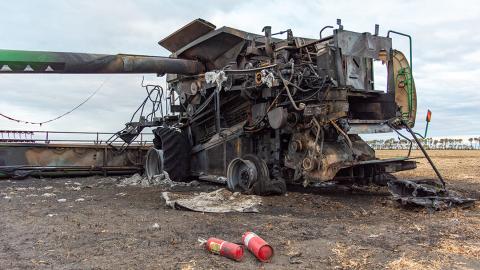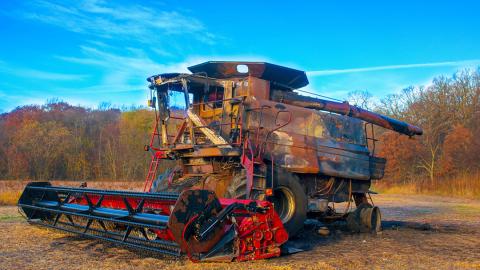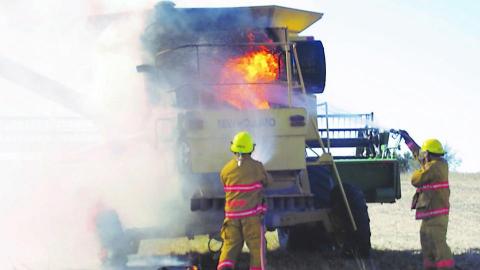Extension to Host Multi-state Emergency Preparedness Workshop Series for Rural Families
February 12, 2024
Hosted by local extension personnel in five locations across Nebraska, the workshop series will focus on farm and ranch emergency management, first aid, fire protection and hazardous materials.
Preventing and Responding to Combine Fires
September 29, 2023
As crop residue starts the majority of combine fires, it's vital to clean equipment every day after harvesting, allow it to cool off before storing inside a machine shed, and avoid harvesting when conditions are at peak fire risk.
Practicing Fire Safety at Harvest
October 8, 2019
Stay safe from harvest equipment and field fires by maintaining equipment before you start, cleaning out embedded residue as you go, and making preparations to respond should a fire occur.

Keeping Your Equipment and Fields Fire Safe At Harvest
October 18, 2017
When residue builds up in your combine or poorly maintained equipment creates sparks, fires can ignite, quickly enveloping your equipment and field. Incorporating the practices outlined here into your harvest routine can help you stay safe this fall.


